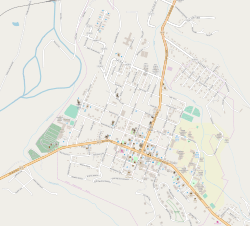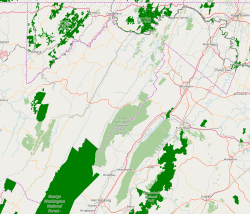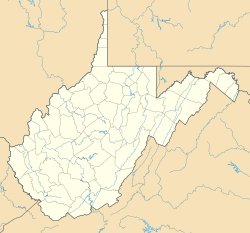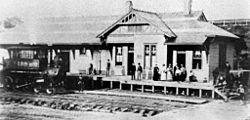Valley, West Virginia facts for kids
Quick facts for kids
Valley, West Virginia
|
|
|---|---|
| Country | United States |
| State | West Virginia |
| County | Hampshire |
| Time zone | UTC-5 (Eastern (EST)) |
| • Summer (DST) | UTC-4 (EDT) |
| GNIS feature ID | 2747081 |
Valley was a small community in West Virginia. It had a post office and was located along the South Branch Valley Railroad. This railroad was part of the larger Baltimore and Ohio Railroad system. Today, the area where Valley once stood is part of Romney, West Virginia. It was near where West Sioux Lane and Depot Valley Road meet.
Valley started to grow in 1884. This was after the South Branch rail line was finished. The main train station for Romney, called Romney Depot, was built there. The United States Post Office Department opened a post office in Valley on May 19, 1928. It stayed open until June 15, 1937. After it closed, mail for Valley went through the Romney post office.
Contents
History of Valley
Early Land Ownership
The land where Valley later developed was once part of a huge land grant. This grant was called the Northern Neck Proprietary. It was given by King Charles II of England in 1649. He gave it to seven of his supporters. After Charles II became king again in 1660, he renewed this land grant.
Over time, the land grant passed to Thomas Fairfax, 6th Lord Fairfax of Cameron in 1719. Lord Fairfax chose a part of this land for his own estate. This area was known as the South Branch Survey. It stretched along the South Branch Potomac River. In 1748, Lord Fairfax hired James Genn to survey the land. He wanted to sell or lease lots, each about 300 to 400 acres. Valley was located within one of these lots, Lot Number 17. Lord Fairfax granted this lot to Samuel Earle in 1749.
By 1778, Isaac Parsons owned Lot Number 17. The land was later surveyed again in 1788. Most of what is now western Romney, West Virginia was inside Lot Number 17. The area where Valley would later be was still undeveloped forest in the 1800s.
The Railroad Arrives
In 1883, the Baltimore and Ohio Railroad decided to finish a planned rail line. This line would connect Green Spring, West Virginia to Romney. Construction started right away. The line was finished in 1884 and was about 16 miles long.
The main train station for the South Branch line, called Romney Depot, was built at the end of Depot Valley. This is where Valley began to grow. The South Branch line officially opened on September 1, 1884. This is also when the area got its name, Depot Valley, because of the train station. The Baltimore and Ohio Railroad bought the property completely in 1912.
Growth and the Post Office
When the railroad and Romney Depot arrived, people started building homes. These homes were on the hills around Valley. In 1911, George Edward Harmison sold parts of his farm, Valley View. This farm was on a hill overlooking the river. He divided the land into lots for homes. This new area was called the Valley View Addition to Romney.
As more people moved to Valley and the train station became busier, a post office was needed. On February 6, 1928, a request was sent to the United States Post Office Department. It suggested putting the Valley post office at Romney Depot. The post office in Valley officially opened on May 19, 1928. However, it closed on June 15, 1937. After that, Valley's mail was sent to the Romney post office.
Valley was shown on a map of Hampshire County in 1933. This map was part of a book called New Descriptive Atlas of West Virginia.
Passenger Train Service
When the South Branch line first opened in the 1880s, a passenger train ran three times a day. It went from Romney Depot in Valley to Green Spring. But in the 1930s, fewer people rode the train. Passenger service stopped soon after.
A special passenger train also carried students from the West Virginia Schools for the Deaf and Blind. It brought them to Romney Depot in the fall and took them home in the spring. The last special train for these students left in the spring of 1941. Later, freight services from Romney Depot also stopped. The station was closed and torn down.
End of Rail Activity
In 1972, the Baltimore and Ohio Railroad joined with another company, the Chessie System. The Chessie System planned to close the South Branch line. However, the part of the line through Depot Valley stayed open for a while.
On October 11, 1978, the Chessie System gave the South Branch line to the South Branch Valley Railroad. This railroad was owned by the West Virginia State Rail Authority. During this change, the Romney part of the rail line was closed. After this, all train and business activity in Valley stopped.
Geography
Valley was located in Depot Valley. It was about half a mile northwest of downtown Romney. Depot Valley stretches about half a mile north. A small stream flows through the valley. This stream runs next to Depot Valley Road and where the old train tracks used to be. Valley was connected to Romney by West Sioux Lane. As of 2014, the area where Valley used to be is covered by secondary forest. The homes on the hills nearby are still there.






